Facts about the Cotswolds: Top Guide for Area History
Facts about the Cotswolds aren’t just interesting—they’re the perfect excuse to explore one of England’s most charming regions. I travel to England several times a year, and the Cotswolds are a personal favorite—I visit at least once annually.
With its rolling hills, storybook villages, and golden stone cottages, it’s no surprise this area is a Designated Area of Outstanding Natural Beauty. But beyond the postcard views, the Cotswolds are rich in medieval history, local traditions, and year-round festivals that keep every visit fresh.
Affiliate Disclaimer: Some links on this blog are affiliate links. This means that, at no additional cost, the author may earn a small commission if you purchase through these links. As an Amazon Associate, I earn from qualifying purchases.
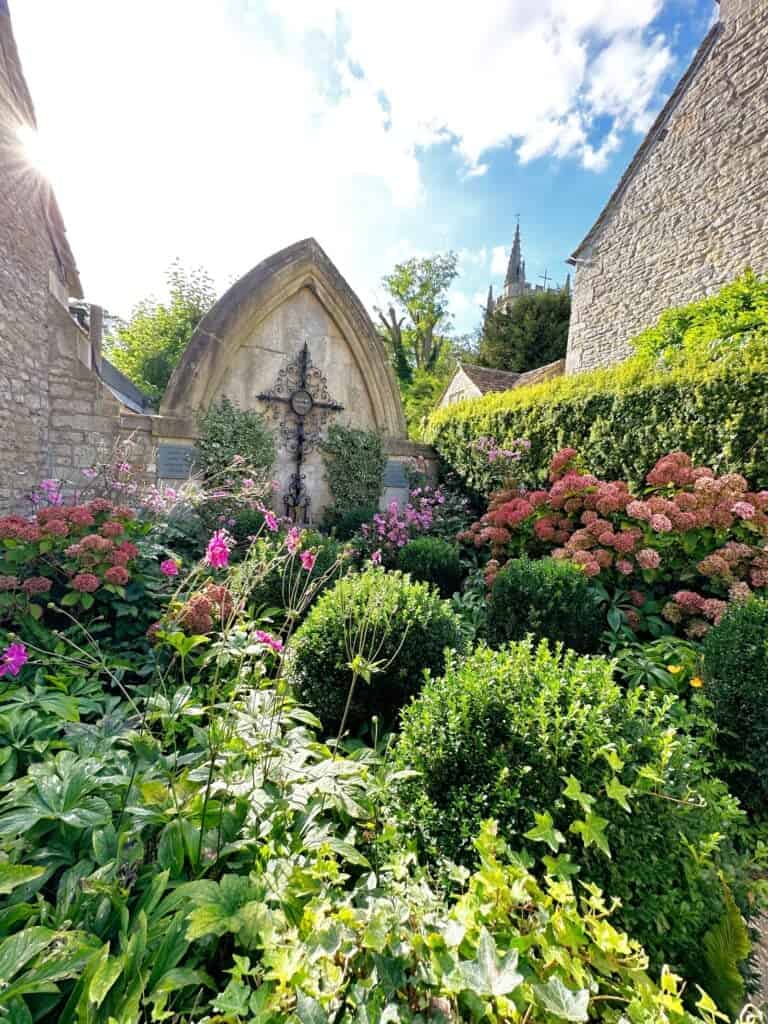
Facts About The Cotswolds
The Cotswolds cover an area of about 787 square miles in England. It’s known for beautiful villages and historic market towns. One town, often called the “capital of the Cotswolds,” is Cirencester. You’ll find many stone-built villages that add to its charm.
Dry stone walls are a common sight here, creating a picturesque landscape. The Cotswold Water Park is a popular spot with over 150 lakes. It’s a great place for water activities and for enjoying nature.
International visitors love exploring the Cotswold Wildlife Park, home to many exotic animals. If you’re into local culture, sampling the local produce is a must, with farmers’ markets offering fresh goods.
Many people dream of having second homes here, attracted by the beautiful part of England. Typical Cotswold towns have a mix of old and new, with shops and cafes lining their streets. Historical towns like Stow-on-the-Wold and Chipping Campden offer a peek into the past.
Whether you’re visiting for relaxation or exploring the heart of the Cotswolds, there’s plenty to see and do. With picturesque villages all around, the Cotswolds remain a popular place for many.
Book Lodging
Elevate your travel experience by reserving the ideal accommodation with Booking.com. Discover a range of hotels that suit your preferences, including location and budget.
Plan your Bucket List Activities
Discover the beauty of your travel destination through guided tours and activities available on Viator. Immerse yourself in the local culture and history.
Rent Your Car
Discover Cars delivers hassle-free car rental solutions, allowing you to explore your destination at your leisure. Embrace the freedom to travel and find hidden treasures along the way.
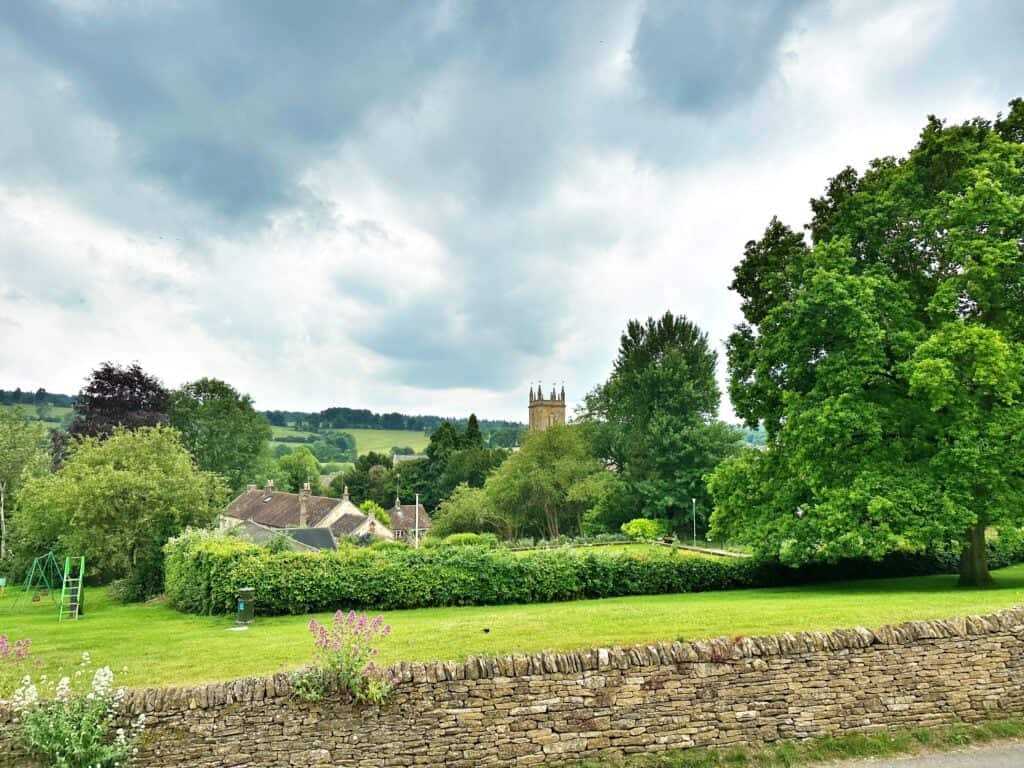
Area Of Natural Beauty
When you visit the Cotswolds, you’re stepping into one of England’s most stunning landscapes. The Cotswold Hills, known for their rolling hills and charming villages, create a scene straight out of a storybook.
One of the highlights is Cleeve Hill. It’s the highest point in the Cotswolds and offers breathtaking views. Imagine standing there, feeling like you’re on top of the world, soaking in the beauty around you.
The Cotswolds are part of England’s largest Area of Outstanding Natural Beauty (AONB). The Cotswold Edge features remarkable escarpments. These unique formations enhance the region’s natural charm, drawing visitors eager to see untouched beauty.
In this designated area, you’re surrounded by exceptional scenes wherever you go. It’s a true treat for nature lovers. The landscapes here provide a peaceful escape from the hustle and bustle of everyday life, inviting you to explore and enjoy.

Where Are The Cotswolds?
The Cotswolds are a beautiful area in south-central England. This region stretches across several counties, including Gloucestershire, Oxfordshire, Warwickshire, and part of Wiltshire.
Chipping Norton and Chipping Campden are in the northern parts. Lower Slaughter and Castle Combe are charming villages further south.
To the west, the River Severn forms a natural border. The River Windrush is another key feature flowing through the area. Meanwhile, the city of Bath lies just beyond the southern end.
The Cotswolds are often referred to as the “heart of England.” They are nestled between the west and the central-southwest regions of England.
This area is famous for its rolling hills and historical towns.
Steep hills mark the eastern boundary. Here, you can explore paths that lead through this scenic landscape. The city of Gloucester is nearby, offering a glimpse into local culture and history.
Don’t miss the chance to explore these unique towns and villages. Their old-world charm and stunning views make them worth a visit.
How To Get To The Cotswolds From London
Reaching the Cotswolds is relatively easy. If you’re coming from London, trains are a convenient option. Catch a train from Paddington Station to Moreton-in-Marsh, which takes a little over an hour and a half.
Another option is to drive. The Cotswolds are about a two-hour drive from London. The M4 and M5 highways connect you to this charming region.
Planning a day trip? Check bus services from major cities like Oxford or Bath. These buses drop you in the heart of the Cotswolds.
If you’re flying in, the closest airports are Birmingham and Bristol. From there, you can rent a car or catch a train.
The Cotswolds are spread out over several small towns. For flexibility, consider renting a car. It’s a great way to see the countryside at your own pace. We take the train to Oxford, then pick up a rental car to drive to the area.
Exploring on foot or by bike is also popular. Many visitors love the walking trails and scenic paths.
Public transport in the Cotswolds isn’t as frequent as in major cities, so plan your route. These options make getting to and around the Cotswolds smooth and enjoyable.
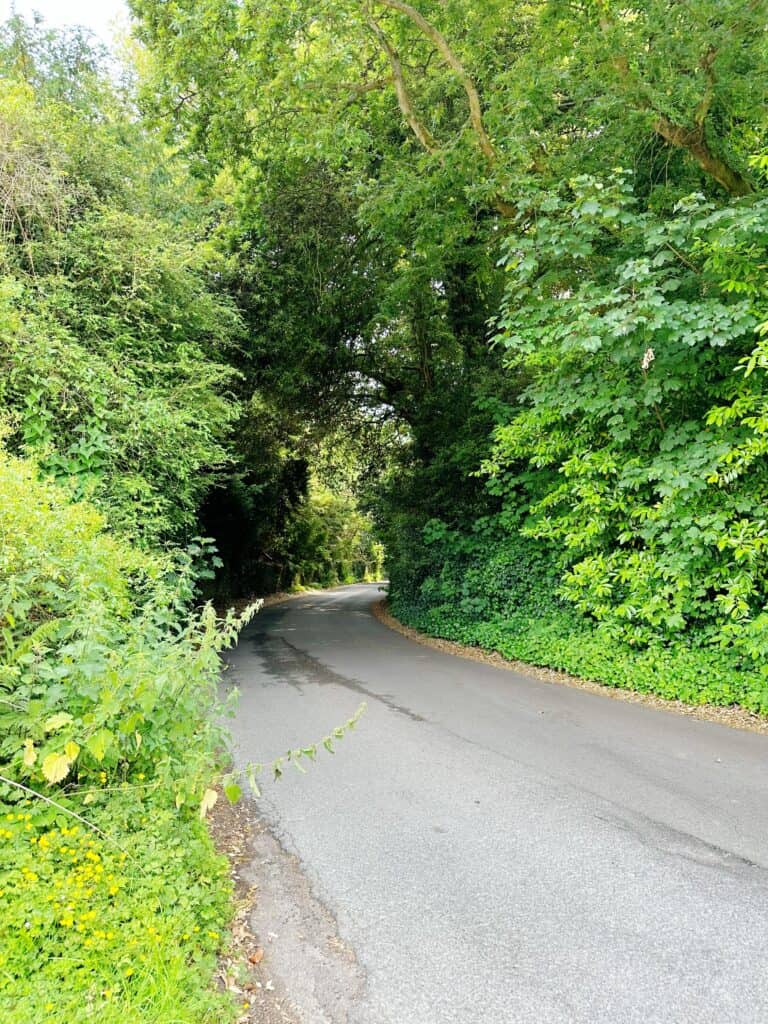
How To Get Around The Cotswolds
You’ll find narrow lanes winding through charming villages when exploring the Cotswolds. Driving your car gives you the most flexibility and allows you to explore at your own pace. Be cautious on these roads, especially around sharp bends.
Car rental is a popular option. Make sure to rent a small vehicle, as navigating the tight roads is more manageable. Parking can be tricky in smaller villages, but usually, designated spots are nearby.
Public transport is also available. Buses connect main towns like Cheltenham and Bourton-on-the-Water. For a relaxed journey, consider using train services. These link major towns like Gloucester and Moreton-in-Marsh to larger cities.
Many areas offer bike rentals if you prefer cycling. This is a great way to enjoy the countryside and the fresh air. Just remember that some hills can be steep!
Walking is perfect for short distances. Many villages are packed with history and home to one of the oldest pubs in England. Walking gives you the chance to stop and enjoy the scenery.
If you want more guidance, consider local tours. These can include bus tours or guided walks, providing insider knowledge of the region’s best spots.
Each method offers a unique perspective on the beautiful Cotswolds countryside. Whichever way you choose, you’re sure to have a memorable experience.
What Is The History Of The Cotswolds
You might find the history of the Cotswolds quite interesting. This area has seen many changes over the years. It all starts with the Romans. People often talk about the Fosse Way, a Roman-era road that crossed the Cotswolds, linking Exeter to Lincoln.
In the Middle Ages, the Cotswolds were known for their wool trade. You might have heard about the great prosperity brought about by the wool industry. The wool trade was so important that it even changed the landscape through sheep enclosures, affecting land use.
Roman villas have also been discovered in the area, showing that wealthy Romans once lived here. The Cotswolds have some relics of these ancient times, offering a peek into what life was like then.
During the Civil War, the Cotswolds were a site of battles. Oliver Cromwell and King Charles I both wanted to control the area, which led to much tension and fighting, but today, it’s part of the Cotswolds’ rich history.
In the 19th century, the Crafts Movement flourished in the area. This movement focused on handmade products and was a reaction to industrialization. You might notice the influence of this movement even now in the charming crafts found throughout the region.
Tours to Experience the Cotswolds
- Full Day Cotswolds Tour; Where Opulence and Heritage Converge
- Cotswolds in a Day Tour from Moreton-in-Marsh / Stratford-on-Avon
- Cotswolds Private Day Tour

What Makes The Cotswold Area Famous?
The Cotswolds are famous for their stunning, quaint villages. As you stroll through places like Chipping Campden or Bourton-on-the-Water, you’ll see charming honey-colored stone buildings and picturesque landscapes. These are places that feel like you’ve stepped back in time.
You’ll surely appreciate the beautiful gardens and stately homes scattered across the region. Hidcote Manor Garden is a must-see with its clever design and flower displays. Wander through its garden rooms, each with unique themes.
Blenheim Palace is another highlight. It’s a grand example of baroque architecture and offers impressive interiors and vast parklands. You can also visit Sudeley Castle, where history and beauty meet, with lovely gardens and fascinating stories.
The Cotswolds have a rich wool trade history, bringing wealth to the area. This trade is why you’ll find many manor houses and attractive small towns. They were built during prosperous times and now offer a glimpse into the past.
Explore Broadway Tower, which sits atop one of the Cotswolds’ highest points. From there, you get breathtaking views of the countryside. It’s a perfect spot for a walk and a picnic.
While visiting, you’ll find many great things to do. Relax in a cozy pub, explore the rolling hills, or visit local markets. The charm of the Cotswolds invites you to enjoy its mix of history, beauty, and tranquility.
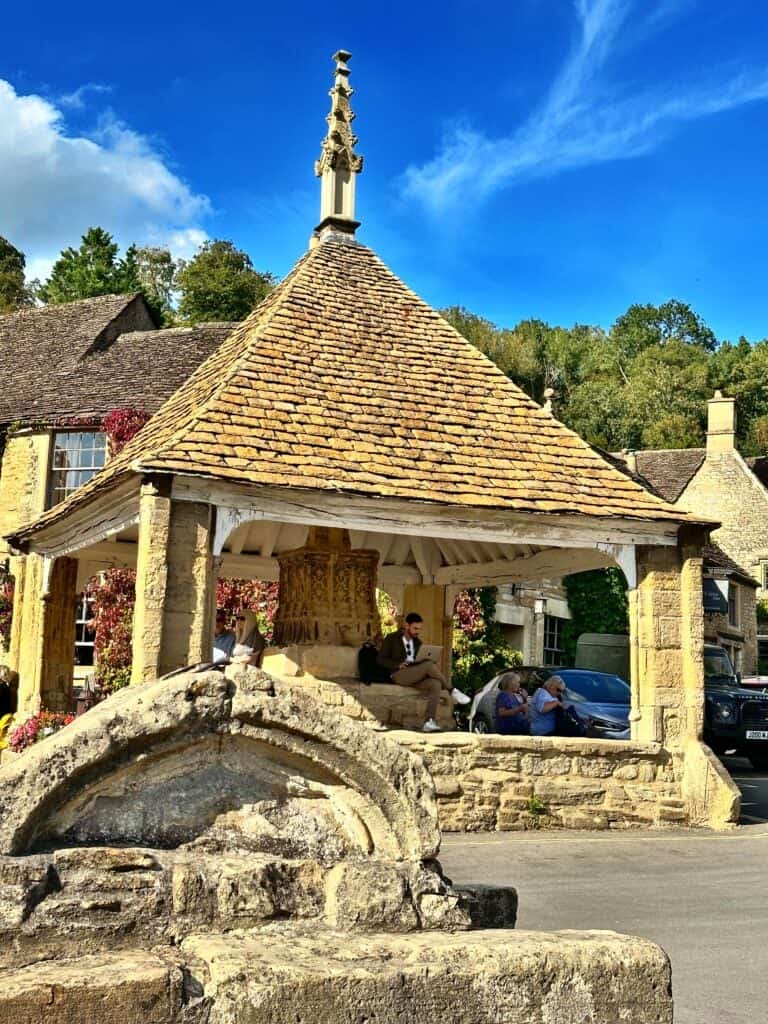
The Architecture That The Cotswolds Are Known For
In the Cotswolds, you will find historical buildings with a unique charm. The area is famous for its golden Cotswold stone, a type of limestone. This stone gives buildings a honey-colored glow, making villages look warm and inviting.
You might come across wool churches during your visit. These churches, built with funds from the medieval wool trade, showcase splendid architecture. Inside, you’ll find beautifully crafted public rooms and intricate designs.
The use of handsome Cotswold stone is common in homes and cottages. This material not only looks beautiful but also stands the test of time. As you explore, notice how the stone’s warm color blends with the landscape.
Architectural styles often include steeply pitched roofs and large chimneys. Many homes feature wooden beams and lovely gardens. Walking through a village can feel like stepping back in time.
The construction of churches and other structures often highlights detailed craftsmanship. You might see ornate carvings and stained-glass windows. Each piece tells a story of the area’s rich past.
Discover how the use of local limestone adds character to towns and villages. The stone’s natural color shifts with the changing light, giving each place its personality. The Cotswolds’ architecture is truly something special to experience.
When Should You Visit The Cotswolds
Spring (March to May): This is a lovely time to visit. Flowers bloom, and the countryside is full of color. There are fewer crowds, and you can enjoy the fresh air. Pack a light jacket—it can be a little chilly.
Summer (June to August): This time is perfect for outdoor activities, and the hotter weather makes it ideal for walking tours. It’s a popular time, so expect more visitors. Book your accommodations early to avoid disappointment.
Autumn (September to November): Enjoy the stunning fall colors as the leaves turn. It’s quieter than summer, allowing you to explore freely. Make sure to check the weather forecast, as it can be rainy.
Winter (December to February): Experience the Cotswolds’ cozy charm during this season. It is ideal for enjoying country pubs with a warm fire. It’s more peaceful, but some attractions may have shorter hours.
Cotswold Tips:
- Festivals: Keep an eye out for local festivals and events.
- Budget: Off-peak seasons may offer better deals on accommodations.
- Activities: Decide on activities you love—hiking, sightseeing, or relaxing.
Choosing the best time to visit depends on what you want to experience. Different seasons offer unique highlights.

Walking In The Cotswolds
Walking in the Cotswolds offers a peaceful escape into nature. This area is known for rolling hills and charming villages, and it’s a place where you can truly enjoy the countryside. The paths here are easy to follow, making it an excellent spot for new and experienced walkers.
A popular trail is the Cotswold Way, a long-distance footpath that stretches about 102 miles. It starts in the market town of Chipping Campden and ends in Bath, a city famous for Roman baths. You can walk the whole thing or pick short sections to explore.
On your walk, you might see dry stone walls, fields, and wooded areas. Animals like sheep and birds are common sights. Be sure to pack a camera for the stunning views along the way. In spring, wildflowers add bursts of color to the landscape.
When planning your walk, consider wearing comfortable shoes. A raincoat is helpful if the weather changes suddenly. Many walkers also bring a map, though parts of the trail are well-marked. You might want to stop in cozy villages for a meal or cup of tea.
For those keen on history, the Cotswold Way passes by ancient sites. Explore Neolithic burial mounds or old churches. These landmarks offer glimpses into the past, adding richness to your journey.
If you’re looking for a short walk, try the trail from Stanway to Winchcombe. This 5-mile stretch offers scenic views and easy terrain, making it a pleasant way to spend the day outside.
Cycling In The Cotswolds
Cycling in the Cotswolds is an excellent way to enjoy beautiful countryside views. Many trails wind through charming villages and rolling hills.
The area has routes for everyone, from beginners to experienced cyclists. Family-friendly paths are perfect for a relaxed ride. For a challenge, try the more hilly terrains.
Many routes are clearly marked, making it easy to explore. Maps are available online and at visitor centers to help plan your journey.
Don’t miss the Cotswold Line cycle route. This path connects several towns and offers a glimpse of the region’s natural beauty.
Remember to wear a helmet and follow road safety rules when cycling. The Cyclists’ Code of Conduct is often displayed near popular trails.
Some local shops offer bike rentals and repair services. This can be handy if you don’t have your bike with you.
There are plenty of places to stop for a rest or a snack. Many pubs and cafés welcome cyclists and offer refreshing drinks and tasty treats.
Planning a cycling trip? Consider timing it with community events like cycling festivals. They can be a fun way to meet other cyclists and discover new routes.
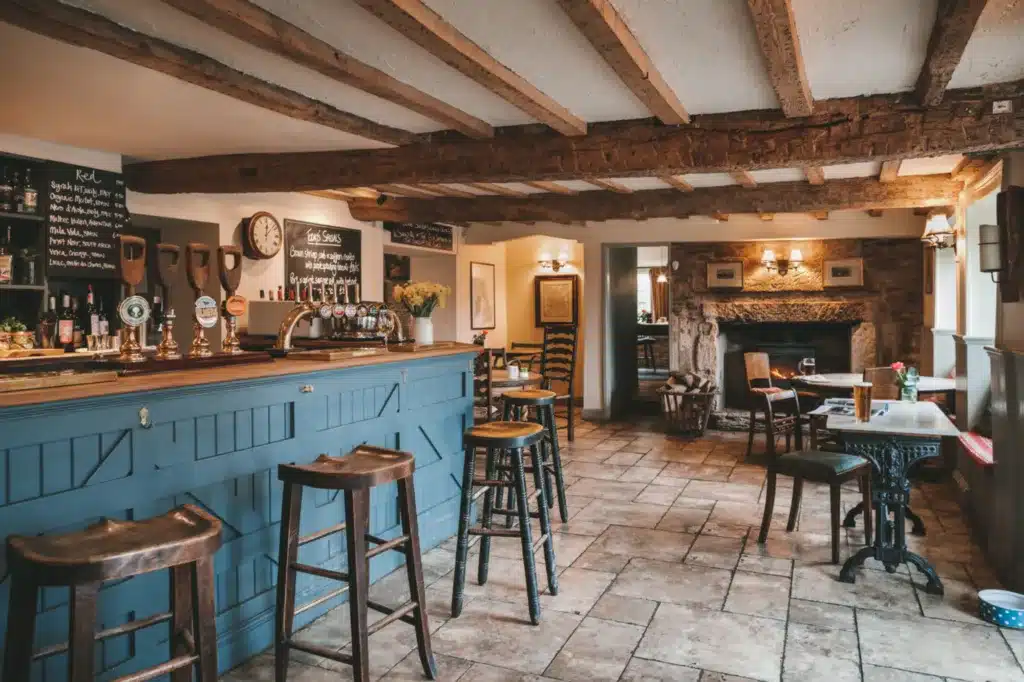
10 Interesting Facts About The Cotswolds
- Cotswold Lion The Cotswold Lion is not a wild animal but a breed of sheep. These sheep have thick wool, perfect for making warm garments.
- William Morris’s Influence William Morris, a famous designer and writer, called the Cotswolds home. He loved the area’s natural beauty and rich history.
- Ancient Pubs The Porch House Pub in Stow-on-the-Wold claims to be the oldest in England. It dates back to 947 AD. Enjoying a meal here is like stepping back in time.
- Bourton-on-the-Water, the ” Venice of the Cotswolds, ” is called the “Venice of the Cotswolds” because of its scenic waterways. You can enjoy walking along charming bridges and riverbanks.
- Quirky Traditions The Cotswolds have their fair share of quirky traditions, including the Cooper’s Hill Cheese-Rolling event. It’s quite a sight to see people chasing a wheel of cheese down a hill!
- Natural Scenery The landscape consists of rolling hills, meadows, and picturesque villages. Stone walls and villages from Cotswold honey-colored stone add to the area’s unique charm.
- History and Heritage Many towns in the area have a rich history dating back hundreds of years. Old buildings and churches tell stories of the past.
- Famous Authors Many writers have found inspiration here. J.R.R. Tolkien and Jane Austen often wrote about places that remind us of the Cotswolds.
- Wildlife Wonders There are many nature reserves where you can see various birds and other wildlife. The diverse ecosystem is a haven for nature lovers.
- A Filmmaker’s Dream The breathtaking landscapes and historic buildings of the Cotswolds make them a favorite location for filmmakers. Movies and TV shows often feature scenic views.

Final Thoughts of Facts About the Cotswolds
The Cotswolds are a hidden gem in the heart of England, with their charming villages, stunning landscapes, and rich history. Whether exploring the rolling hills on a peaceful hike or wandering through picturesque market towns, there is something for everyone to enjoy in this beautiful region.
So why not plan a visit to the Cotswolds and experience its timeless beauty for yourself? You won’t be disappointed! The Cotswolds have won my heart, and it is the first place I think about when asked about a day trip from London.
Related Post to Facts About the Cotswolds
- Best Day Trip By Train from London Under 3 hours
- Best Cotswold Pubs: Unwind in Quaint Countryside Taverns
- Romantic Getaways in the UK That Are Unique and Hidden Gems
- 15 Best Things to Do in the Cotswolds, England Guide
FAQ: Facts about the Cotswolds
The Cotswolds are famous for their charming villages and beautiful landscapes. Many travelers are drawn to its historical significance and picturesque spots, making it popular. Let’s examine some specific questions about what makes this region so unique.
The Cotswolds’ rolling hills, limestone grasslands, and ancient woodlands give it a stunning natural appearance. This area is recognized for its exceptional landscapes. The traditional stone cottages and picturesque villages add to its charm, creating a unique environment that people love.
When you’re in the Cotswolds, visit Bibury and Bourton-on-the-Water. These villages are known for their scenic beauty and traditional architecture. You’ll also find delightful antique shops in Stow-on-the-Wold and Chipping Campden. Each village has its unique charm and attractions.
The Cotswolds have a rich history reflected in their market towns and historic buildings. During the Middle Ages, it was a prosperous wool trading area. The word “Cotswolds” is believed to mean “sheep enclosure in rolling hills.” The Cotswolds area is the largest AONB in England, having boundaries of several English counties.
Travelers come to the Cotswolds for its beautiful countryside, historical sites, and peaceful environment. The combination of nature and history provides a relaxing retreat. Discover charming villages, enjoy local foods, and browse through antique shops.
You have several choices for staying in the Cotswolds. Consider cozy bed and breakfasts, luxurious country hotels, or renting a traditional cottage. Many options fit different preferences and budgets and offer a comfortable experience.
The name “Cotswolds” is thought to mean “sheep enclosure in rolling hills” from Old English. This region was historically noted for its sheep farming, which played a key role in its development and prosperity. The name reflects this heritage and its rural landscape.

